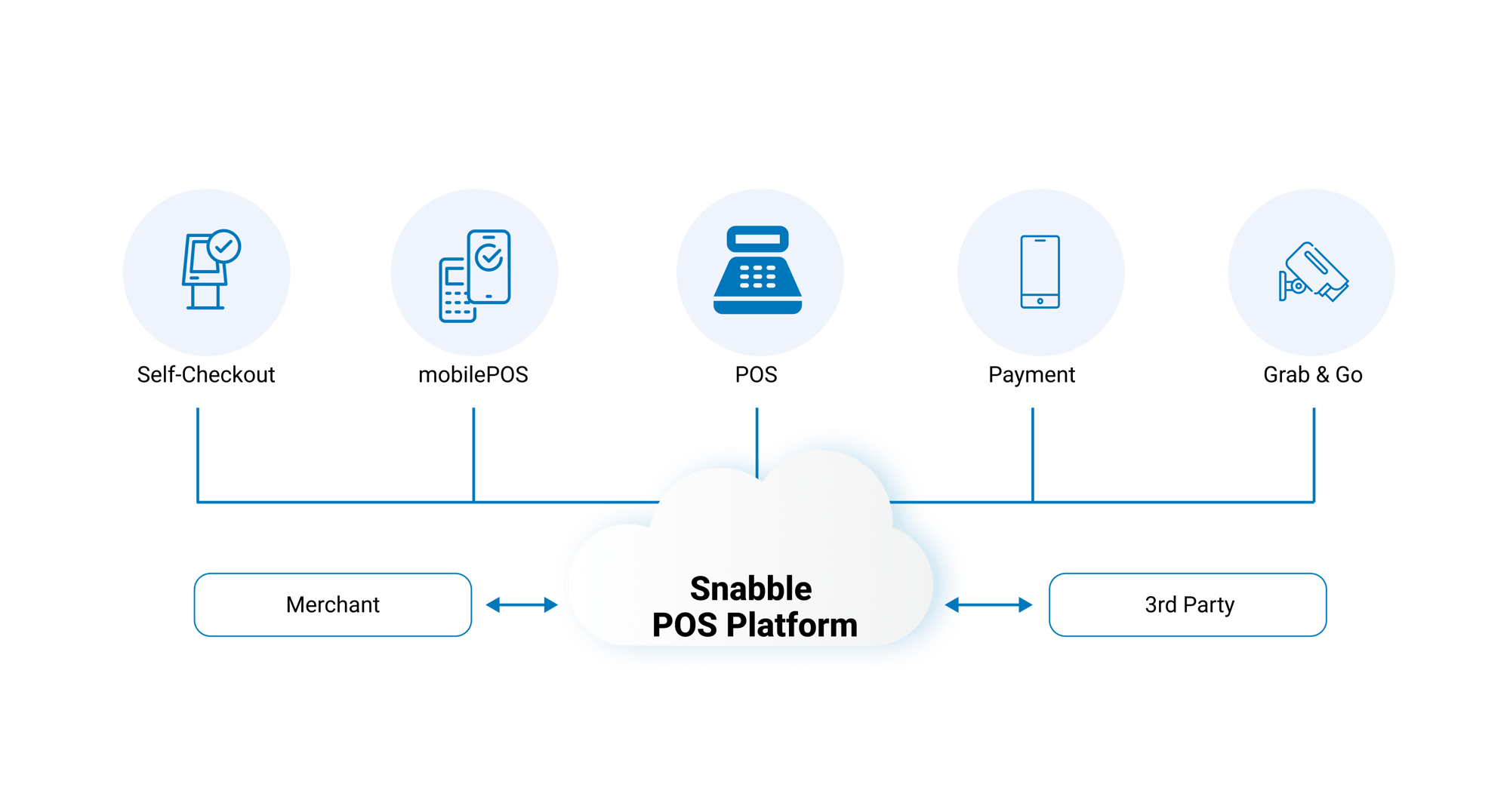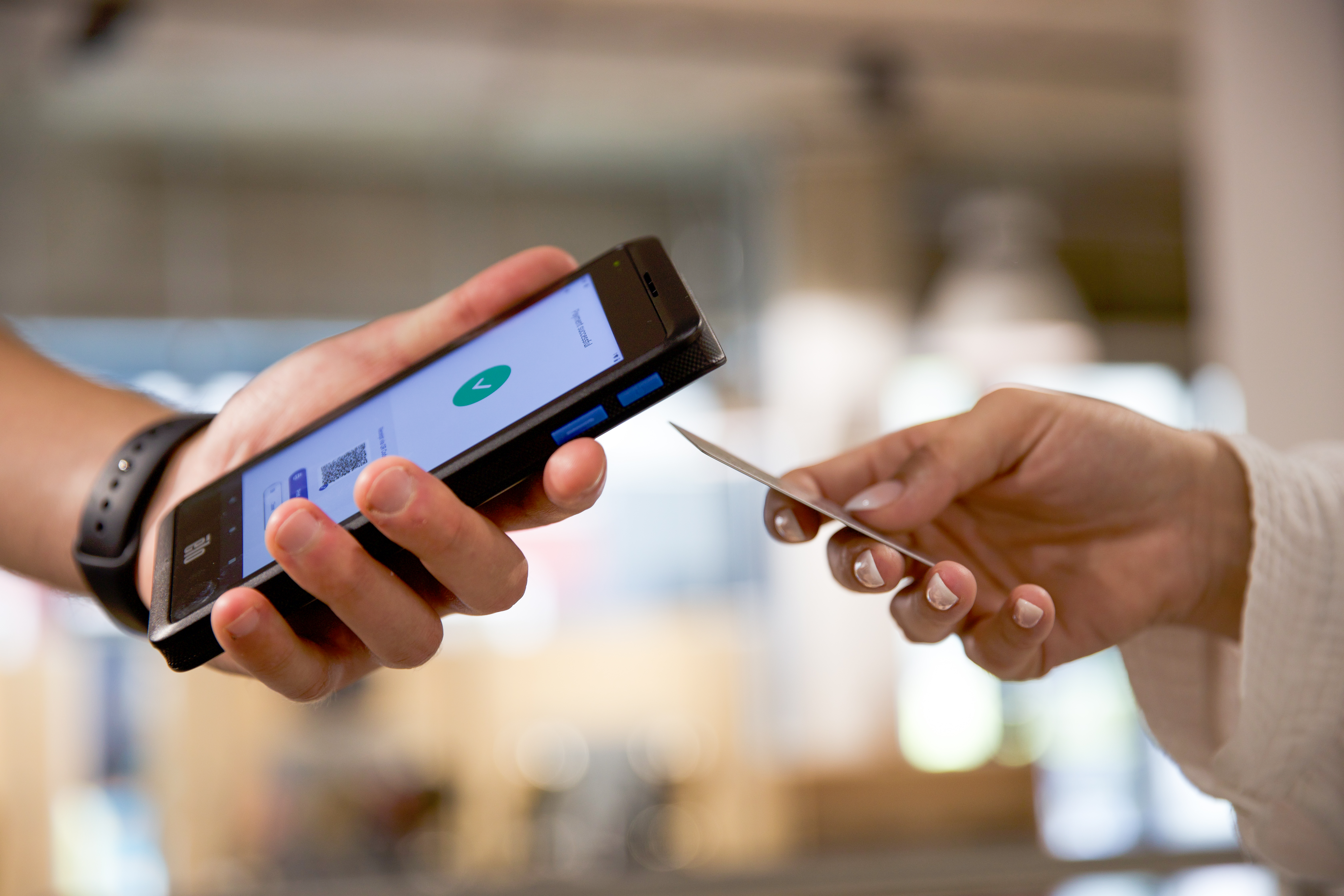Transforming the POS - Cloud Platform and Legacy Systems
In today's fast-paced retail landscape, efficiency and flexibility in the checkout area play a crucial role in retailers' business success. The problem - many retailers use checkout software that has been in use for years and therefore no longer meets the current needs of retailers.
For this reason, almost a quarter (23%) of retail companies were already planning to change their software partner in 2022. But what is important when choosing a system and which is the best POS system? Find out what leading retailers look for when choosing their POS software and how platform-based POS systems minimise risks for retailers and also offer numerous new opportunities.
Requirements for a future-proof POS system
Due to changing consumer behaviour towards more autonomy, greater convenience and reduced brand loyalty, brick-and-mortar retailers are forced to create new incentives and touchpoints for customers. Long queues are one of the biggest obstacles when it comes to inspiring customers. Instead of the classic cash register with cash register belt, cash drawer and scales, customers are increasingly favouring more innovative checkout methods, such as self-checkout tills or paying at the mobile checkout.
Above all, the mobile point of sale represents the greatest need for action in stationary retail, closely followed by the use of self-checkout systems, the acceleration of non-cash payments and the organisation of queues.
When choosing the right POS system, certain factors play a decisive role. Above all, intuitive operability and quick customisability of the software are the most decisive factors. This is crucial as it reduces employee training costs, makes rollouts easier and quicker and allows changes to be implemented more quickly, which is urgently needed in a dynamic market environment.
Other important factors for retailers are the mobile usability of the software (keyword: mobile point of sale), international usability and cloud capability. The latter is primarily due to the fact that cloud-based POS software with remote access is much easier to maintain than on-premise systems, i.e. software that is permanently installed on a physical device. This means that updates can be installed centrally without the need for a technician to visit the shop and maintain the device. Retailers are most dissatisfied with their current systems, especially when it comes to cloud capability and mobile POS.
If we look at the checkout process itself, the following factors can be identified as the most important optimisations in ascending order:
- Use of autonomous stores
- Reorganisation of the checkout area
- Organisation of queues
- Increased efficiency with non-cash payments
- Avoidance of inventory differences
- Use of self-checkout and self-scanning systems
- Use of mobile devices with checkout function
The problem with legacy POS systems
Regardless of the type of POS system, cloud-based or on-premise, the biggest problem that conventional POS providers currently have is adapting outdated software to new requirements. The background - traditionally, software has been built in so-called monolithic structures that cannot be easily extended, as adapting a single component is like reworking the entire software.
Monolithic structures can therefore hinder the ability to innovate at the POS and the overselling that is widespread in the industry creates a lack of transparency for retail companies. At the same time, retailers must respond to changing customer wishes and buying habits in order to secure market share and tap into new segments. How can this challenge be overcome?
The magic word is "microservice architecture". POS software based on a microservice architecture makes it possible to customise individual components of the software in isolation without affecting the rest of the software.
Extension of the old system
Retailer Mustermann has had a POS system with POS provider A for years, which works and has fulfilled all his requirements to date. Retailer Mustermann would now like to make his POS system mobile, e.g. with a mobilePOS. However, the software from POS provider A was never designed to cover the mobile point of sale and is not yet able to provide the service. The provider therefore has to completely customise its software, which involves a great deal of effort. However, in order not to lose his customer, POS provider A assures the retailer that the software "only needs minor changes" and that they will be ready for a test phase "very soon". Retailer Mustermann acts in good faith and commissions the mobilePOS - the customer advisor has not told him that the development of a prototype has actually been commissioned, that retailer Mustermann could have already carried out tests and planned the rollout for all shops at the same time and probably even more cost-effectively.
Flexible integration of a new system
Retailer Musterfrau has done some research and would like to connect a second POS system to her old POS system, which she trusts and which has always worked, which can map the mobile point of sale, such as Snabble. Although Snabble has a ready-made mobilePOS, it does not have a standard interface to the system from checkout provider A. Thanks to its microservice architecture, Snabble can customise the interface without affecting other parts of the software. After this one-off integration, retailer Musterfrau immediately has a mobilePOS ready for rollout, while retailer Mustermann and POS provider A are still filling out requirement forms.
This simple example shows some of the advantages that can arise for retailers. Hardware costs can also be minimised, as a platform-based POS is generally hardware-independent. Even though the speed and complexity of change can be overwhelming, the right systems help to cover the aspects mentioned at the beginning, simplify processes and keep the IT landscape for your POS lean.
Platform concept as a central solution approach: Snabble POS Platform
Imagine you could simply integrate a single system and have all requirements and application scenarios covered. This is precisely the central idea behind the POS platform - once integrated, you can scale the cloud-based POS system indefinitely. Use cases such as self-checkout systems, autonomous stores, mobile point of sale or stationary POS with an intuitive user interface are transformed from complex individual projects into rollout-ready products that are immediately available.

This is made possible by a constantly growing partner network and the ongoing development of the Snabble product portfolio. The microservice architecture allows the complete customisation of individual services, while the cloud capability ensures that data is stored securely in a central location and can be exchanged at the relevant points in real time, e.g. to authorise payments or to transfer data back to the retailer's ERP system or archive.
The POS platform can also be flexibly connected to existing systems, as in the example above. Business owners as well as IT and project managers benefit from the increased flexibility and many other advantages that Snabble POS offers. Thanks to our large partner network, we offer maximum flexibility in the selection of various retailer services, Snabble services and 3rd party providers.
Overview of POS features
The modern point of sale is much more than just an ordinary checkout where items are scanned, employees cash in and customers pay for their purchases. There are now many more functions that a POS system must be able to cover. In addition to data supply and disposal as well as fiscalisation, i.e. the reporting of transactions in compliance with the tax authorities, retailers can also take measures to increase customer loyalty and add value.
With dynamic price calculation, store-specific promotions and prices or even dynamic prices can be made possible by intraday supply through delta updates.
Receipts can be created with the POS platform and either output as a QR code or printed out by a receipt printer.
The POS platform forwards data to the relevant systems via appropriate interfaces.
Data is transferred from the acquirer to the issuer, which ultimately enables transactions to be executed.
Use this function to keep track of outgoing goods, turnover and taxes.
By connecting to Deutsche Fiskal's cloud TSE or EFsTA, transactions can be reported regardless of location and in compliance with regulations.
Use loyalty cards to increase customer brand loyalty towards your company.
Couponing enables you to use targeted measures to promote sales and increase your turnover.
Store-specific promotions and prices allow you to strengthen your locations and incentivise purchases.
Conclusion: POS systems
Retailers are faced with the challenge of implementing new POS solutions and thus moving closer to their customers, which in many cases requires them to break up outdated IT structures. A platform-based POS system helps to reduce complexity and is an efficient solution for bridging the gap between an outdated POS system and a modernised point of sale.
Related links:
Flexibility and mobility in brick and mortar retail with mobilePOS
The added value of a self-checkout technology for brick and mortar retailing
mobilePOS – The mobile checkout system
Share this
You may also like
These related stories

mobilePOS: The mobile checkout system

White Label POS Systems - Advantages, Requirements and Possibilities
